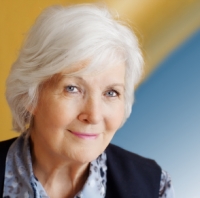This article is courtesy of PRWeb, please share your comments below…..
 New Report From Prevent Blindness Shows Cataract More Prevalent in Women; Number of Hispanic Cases to Increase Dramatically in Near Future.
New Report From Prevent Blindness Shows Cataract More Prevalent in Women; Number of Hispanic Cases to Increase Dramatically in Near Future.
The recent Prevent Blindness “Future of Vision: Forecasting the Prevalence and Costs of Vision Problems” report states that nearly 25.7 million Americans ages 40 and older have cataract. The number will increase by 50 percent to 38.5 million by 2032 and by 78 percent to 45.6 million by the year 2050. Cataract is a clouding of the eye’s lens which blocks or changes the passage of light into the eye.
In addition, the report also found that the majority of cataract patients today are women, a trend that will continue. Whites will continue to make up the large majority of cataract patients, but this population will level off and slightly decrease by the 2040’s. Hispanics will exhibit the fastest rate of growth in cataract cases.
Prevent Blindness has declared June as Cataract Awareness Month to educate the public on cataract, risk factors, symptoms and treatment options, including surgery. Free information is provided through its dedicated web page at preventblindness.org/cataract, or via phone at (800) 331-2020.
Types of cataract include:
Age-related – 95 per cent of cataracts are age-related, usually after age 40.
Congenital – These are present at birth, usually caused by infection or inflammation during pregnancy; possibly inherited.
Traumatic – Lens damage from a hard blow, cut, puncture, intense heat or chemical burn may cause cataracts.
Secondary – Some medicines, eye disease, eye infection, or diseases such as diabetes cause these cataracts.
Radiation – Cataracts can develop after exposure to some types of radiation.
Unlike many eye diseases, however, vision loss due to cataract can be restored. Cataract surgery is one of the most commonly performed procedures in the United States and has a 95 percent success rate.
“The key to preventing vision loss, whether from cataract or other eye disease, is to have a complete dilated eye exam from an eye care professional,” said Hugh R. Parry, president and CEO of Prevent Blindness.
Prevent Blindness also offers a free online module on cataract including a PowerPoint presentation with a complete guide as part of its Healthy Eyes Educational Series. These are ideal for conducting discussions, lunch-and-learns or seminars on cataract.
For free information on cataract, please call Prevent Blindness at (800) 331-2020 or visit the Prevent Blindness website at preventblindness.org/cataract. For information on insurance benefits, including Medicare coverage, free facts can be found at http://www.preventblindness.org/health-insurance-and-your-eyes.
About Prevent Blindness
Founded in 1908, Prevent Blindness is the nation’s leading volunteer eye health and safety organization dedicated to fighting blindness and saving sight. Focused on promoting a continuum of vision care, Prevent Blindness touches the lives of millions of people each year through public and professional education, advocacy, certified vision screening and training, community and patient service programs and research. These services are made possible through the generous support of the American public. Together with a network of affiliates, Prevent Blindness is committed to eliminating preventable blindness in America. For more information, or to make a contribution to the sight-saving fund, call 1-800-331-2020. Or, visit us on the Web at preventblindness.org or facebook.com/preventblindness.
